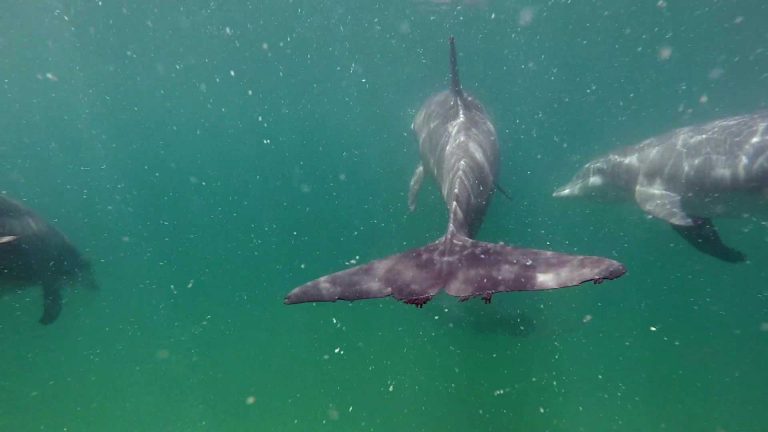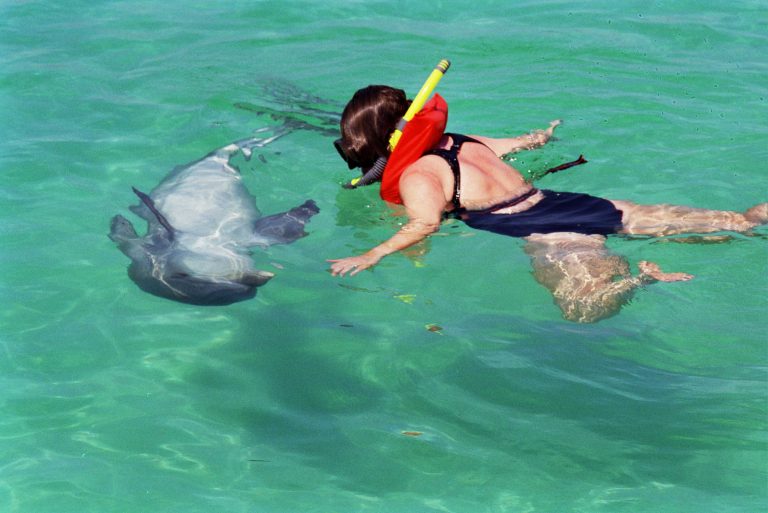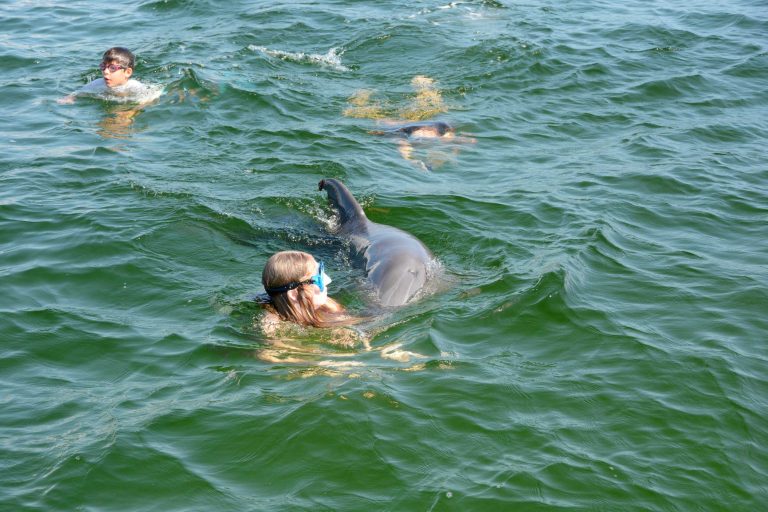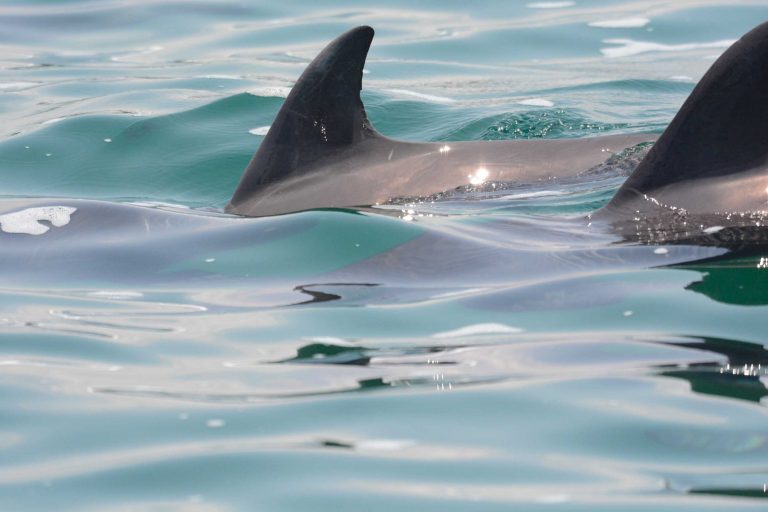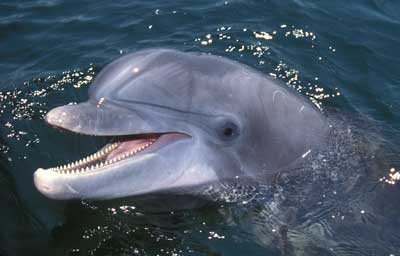Shell Island State Preserve: The Environment
Shell Island is an undeveloped barrier island, which lies between the Gulf of Mexico and St. Andrews Bay. It is located in Bay County, Panama City Beach, Florida. It is where our dolphin tours and dolphin swim tours take place.
The island’s pristine beauty and marine environment make Water Planet’s eco-tours an enjoyable and exciting way to experience dolphins in their natural habitat. If you wish, you will have the opportunity to explore Shell Island and the back bay, where you will be able to wade or snorkel on the shoals where most grass beds are.

The sea-grass beds are where most marine life starts. It is a nursery and the bottom of the food chain. You will be able to collect seashells and to watch wild birds and game. Shell Island is a nature preserve, a bird preserve and sanctuary, a perfect place for bird watching. Our eco-tours will take you to Shell Island where you will be able to observe several species of marine birds and other wading birds like egrets and blue herons.
Video of our Swim with Dolphin Tours to Shell Island
In the warm emerald-colored waters of Shell Island Nature Preserve, dolphins initiate contact with humans. These marine mammals are wild and free and have established a privileged relationship with human beings.
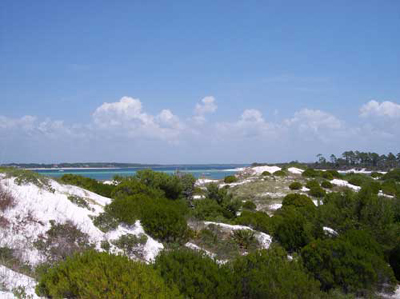
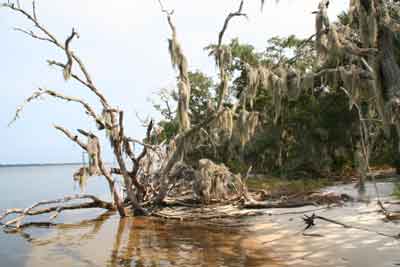


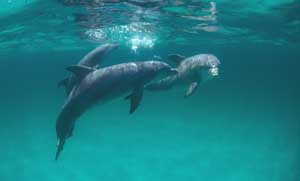
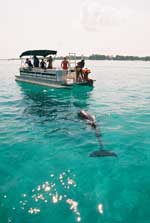
Animal and plant life on and around Shell Island
Environmental awareness is one of Water Planet’s wild dolphin encounters programs’ main objectives. Dolphins and other marine life, the fauna and flora found on Shell Island form what is called an ecosystem. Each organism has its own specific place and function in the environment as a whole while interacting with the other elements. The good health of one is dependant on the good health of the other. Dolphins are at the top of the food chain and are a good indicator of the health of their environment and therefore of ours as well. Understanding and respect are the corner stones of wild life protection and conservation. Respect is letting grow and letting be; from the smallest and seemingly most insignificant to the largest manifestation of nature. And that includes respecting oneself as well. During the course of our “expeditions”, we will do our best to introduce you to the animals and to the plant life that live on and around Shell Island.
THE HORSESHOE CRAB (LIMULUS POLYPHEMUS):
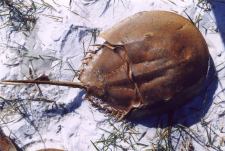
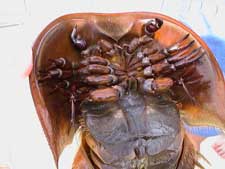
Contrarily to what its name suggests, the horseshoe crab is not a crab. It is an Arthropod: animal with an articulated body and limbs like Insects, Crustaceans and Arachnids (spiders). The horseshoe crab is a Merostoma meaninig “legs attached to the mouth”. It is one of the oldest animals on earth. The females lay clusters of several thousand eggs between the low and high tide line generally during full and new moons. An extract of its blood is used by pharmaceutical companies to test intravenous drugs, vaccines and other medical devices to make sure they are free of bacteria. For more about horseshoe crabs, visit www.horseshoecrab.org
THE BLUE CRAB (CALLINECTES SAPIDUS):
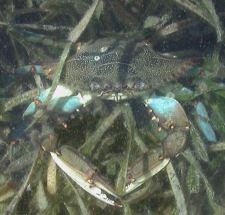
Derived from the Latin and the Greek: Calli, beautiful; nectes, swimmer; and, sapidus, savory. Literally: the beautiful, savory swimmer. It is the most common edible crab in Florida. It can be found in bays and estuaries in shallow brackish water between the tide line and about a 100 feet of depth. Males have blue tipped claws and females orange tipped claws. You can also tell a male from a female by the shape of their abdomen (skinny and obelisk shaped for males and domed shaped for females). They have 4 pairs of legs and 1 pair of sharp claws. After mating with the male, the female crab will fertilize her own eggs and spawn. To learn most everything there is to know about blue crabs, visit the Blue Crab Info Site.
THE STONE CRAB (MENIPPE MERCENARIA):
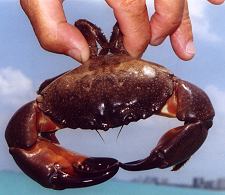
Reddish brown in color, it is the largest of the mud crabs. It lives in burrows on shallow sandy or muddy bottoms and turtle grass. It has powerful claws. The crusher claw of a large stone crab can exert pressure in excess of 18000 lbs per square inch. That crusher claw is served in seafood restaurants for a high price. Its harvest is strictly regulated. In Florida, harvesting is only allowed between October 15 and May 15. Only one of the claws can be removed. It must be at least 4″ from tip to first joint Egg bearing females cannot be declawed. The crab must be returned to the water. It takes between 12 to 24 months for the claw to regenerate and grow back to legal size. Guess which of the 2 claws people usually brake off? The small one or the big one? To learn more about stone crabs, visit Fish and Wildlife Research Institute
THE GHOST CRAB (OCYPODE QUADRATA):
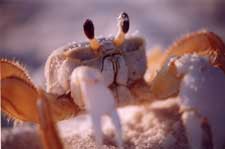
Is called ghost because its sandy colour makes it difficult to see. It is very fast, feeds at night, seems to appear out of nowhere and vanishes all of a sudden. Ghost crabs live in burrows on the beach. They stay in their holes for the winter months. They become active at nightfall and run along the beaches to wet their gills. Though they live in the sand out of the water, they don’t breath air directly and need access to the seawater in order to survive. They can produce 3 sounds: a rapping of the claw on the substrate, a rasping stridulation of the legs, and a bubbling sound presumably produced from the gill chamber. Combat between males is highly ritualized and rarely ends with contact.
THE HORSE CONCH (PLEUROPLOCA GIGANTEA):
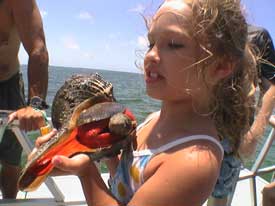
Has been Florida’s official state shell since 1969. It is not a conch but belongs to the tulip family. It is the largest conch in the world (sometimes reaching 26 inches long). The Horse Conch will eat any mollosk including its own kind, but it especially likes to feed on pen shells. Horse conchs live in sandy grass flats where pen shells are numerous.Mature Horse Conchs are very popular with shell collectors. A large shell can fetch up to $100.00. Needless to say that these animals are subject to persecution because of the market value of their shells.
THE SAND DOLLAR (PHYLUM ECHINODERMATA):
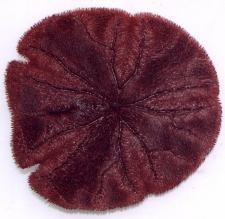
The sand dollar is a hard shell with very little live tissue. The five small holes around the center on the top side are called “gonopores”. The live animals emit sperm or eggs into the water through these holes. The flower pattern on the top side is created by a series of very small slits more clearly visible on the dead shell. When the animal is alive, tiny appendages extend through the small openings to exchange gases with the water. This is how it breathes. The five large slots are called “lunules”. They help with burrowing by letting the sand go through. They also allow food particules settling on top to be passed down to the mouth. The teeth are arranged in a starlike pattern and guard the mouth opening. This chewing system is called “Aristotle’s Lantern”. Just like the top, the underside of the sand dollar is covered with small spines moving together in a wave-like pattern. They are used to move around and to dig into the sand. Alive, sand dollars are dark brown or purple in color. When they die, the tiny spines fall off and the dead shell turns white. Sand dollars, sea urchins and starfish all belong to the family of Echinoderms.
SPINY SAND STAR, LUIDIA ALTERNATA:

Common Names includes: Limp Sea Star, Banded Sea Star. Luidia are predatory and usually prey on other echinoderms like brittlestars. However they can also eat dead bait thrown overboard by fishermen. Unlike other sea stars, they do not have suckers to open bivalves.The most well-known behavior this sea star as well as others is its ability to regenerate severed or voluntarily automized arms. This form of regeneration is important for it can lead to asexual reproduction in the larvae stage.
Kristen, Water Planet staff is holding this beautiful specimen during our famous “Wet Lab”. Needless to say that all collected specimens are returned to where they came from within the least amount of time possible.These starfish are found in sandy and muddy sediment in 10-150 feet of water. They use their spines and feet to bury themselves into the sand, or mud. They can be found from North Carolina to Argentina. Although they concentrate on the coasts of Mississippi, Texas, and Mexico, L. you will also find them in the Caribbean and off of Florida’s coast.This group of starfish is named for the Welsh naturalist Edward Lhuyd who went by the latin name Luidius!
THE STARFISH (ASTEROIDEA):
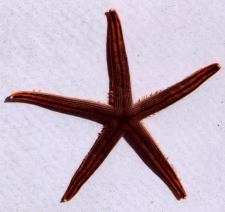
The starfish’s body is built around 5 points like all the other echinoderms. Starfish have neither head nor tail; neither right side nor left side. they can move in any direction without turning. Most of them have 5 arms or a number of arms in multiples of 5. On the inside of the arms are tube like feet ending in tiny suction cups. They feed on mollusks like oysters, clams and other shellfish, which they pin down until the shell opens up. Then the starfish stomach comes out of its mouth and penetrates its victim’s shell. The starfish digest its prey on the spot then its stomach retracts back inside through the mouth.
THE SEA HARE(APLYSIA BRASILIANA):
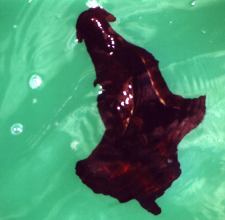
Sea hares look like the big slugs we find in the garden but they live in seawater. Their shell is small and internal. You can often see them by the breakwaters, rocks or seawalls where they graze on seaweed and algae. They swim gracefully with their undulating “wings”, which are in reality the extension of their feet. When upset, sea hares release a jet of ink like the octopus or squid in order to escape under the cover of this dark purple cloud.
JELLYFISH (CNIDARIA):
Several types of jellyfish can be found in Florida waters. Most of them will cause a stinging or burn sensation by accidental contact with your skin. Jellyfish are not looking for people to sting them. It is a defense mechanism and you can avoid contact by steering clear of them in the water. Should you get stung, ammonia, vinegar or meat tenderizer will usually diminish the pain. Antihistamine may be necessary to keep the swelling down if you have allergic reactions.
ATLANTIC SEA NETTLE (CHRYSAORA QUINQUECIRRHA):
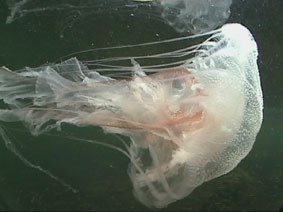
The Atlantic sea nettle is an invertebrate. The nettle’s sting is rated from “moderate” to “severe” and can be pernicious to smaller prey; it is not, however, potent enough to cause human death, except by allergic reaction. The sea nettle is radially symmetrical, marine, and carnivorous. Its mouth is located at the center of one end of the body, which opens to a gastrovascular cavity that is used for digestion. It has tentacles that surround the mouth to capture food. Nettles have no excretory or respiratory organs. Each sea nettle is free-swimming and can reproduce both sexually and asexually. Stinging sea nettles generally feed on zooplankton, ctenophores, other jellies, and sometimes crustaceans. Nettles immobilize and obtain their prey using their stinging tentacles. After that, the prey is transported to the gastrovascular cavity where it is subsequently digested. Nettles also eat young minnows, bay anchovy eggs, worms, and mosquito larvae. Each nettle tentacle is coated with thousands of microscopic nematocysts; in turn, every individual nematocyst has a “trigger” (cnidocil) paired with a capsule containing a coiled stinging filament. Upon contact, the cnidocil will immediately initiate a process which ejects the venom-coated filament from its capsule and into the target. This will inject toxins capable of killing smaller prey or stunning perceived predators. On humans, this will most likely cause a nonlethal, but nevertheless painful rash typically persisting for about 20 minutes
CANNONBALL JELLYFISH (STOMOLOPHUS MELEAGRIS):
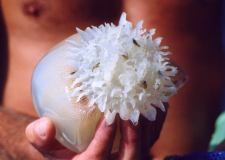
Its dome-shaped bell can reach 25 cm (10 inches) in diameter and the rim is sometimes colored with brown pigment. Underneath of the body is a cluster of oral arms that extend out around the mouth. These arms function as a way of propulsion and aid in catching prey. Cannonballs are prominent from North America’s eastern seaboard all the way to Brazil. However, cannonballs are most commonly known to inhabit the southeastern coast of the United States, including the Gulf Coast. they are extremely abundant in the fall and summer months. During these months. Cannonballs eat mainly zooplankton and also all forms of red drum larvae. They have a symbiotic relationship with the portly spider crab, which also eats the small zooplankton. The crab feeds on the prey captured by the cannonball and also on the medusae of the jellyfish As in most cnidarians sexual reproduction is not an imperative way for cannonballs to reproduce. They can reproduce both sexually and asexually. After about 3-5 hours the larvae fall to the bottom and attach themselves to a hard structure. There they evolve into polyps and catch small prey that swims by. After several days the polyp will detach and become a swimming ephyra, and will eventually turn into an adult jellyfish. One of the main predators of cannonball jellyfish is the endangered species leatherback sea turtle. Cannonballs are a main source of food for the leatherbacks, so conservation of cannonball. Cannonball jellyfish are commercially harvested as food for humans
PORTUGUESE MAN-OF-WAR (PHYSALIA PHYSALIS):
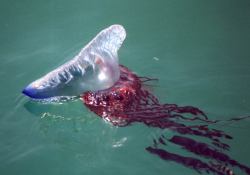
The common name comes from a Portuguese war ship type of the 15th and 16th century, which had triangular sails similar in outline to the bladder of the Portuguese Man O’ War. While the Portuguese Man O’ War resembles a jellyfish, it is in fact a siphonophore ? a colony of four kinds of minute, highly modified individuals, physiologically integrated rather than living independently. The Portuguese Man O’ War is infamous for having a painful sting. The Portuguese Man O’ War lives at the surface of the ocean, with its float above the water, serving as a sail, and the rest of the organism hanging below the surface. It has no means of propulsion, but is moved by a combination of winds, currents, and tides. It is found in open ocean in all of the world’s warm water seas but is relatively uncommon on the Gulf Coast where strong onshore winds may occasionally drive them into bays or on beaches. Below the main body dangle long tentacles, which occasionally reach 50 metres (165 ft) in length below the surface, although 10 metres (30 ft) is the average. The long tentacles “fish” continuously through the water and each tentacle bears stinging venom-filled nematocysts (coiled thread-like structures) which sting and kill small sea creatures such as small fish and shrimp. Certain small fish are able to live among the tentacles (being nearly immune to the poison from the stinging cells) and have a commensal symbiotic relationship with no negative or pathogenic effect on the host. The Loggerhead Turtle feeds on the Portuguese Man O’ War. The skin of the turtle is too thick for the Portuguese Man O’ War sting to penetrate and launch its venom. The sea slug Glaucus atlanticus also feeds on the Portuguese Man O’ War, as does the violet snail Janthina janthina. Blanket octopuses are immune to the venom of the Portuguese Man O’ War, and they have been known to rip off its tentacles and use them for defensive purposes
COMB JELLY (CTENOPHORA):
Comb jellies, are a phylum of animals that live in marine waters worldwide. Their most distinctive feature is the “combs”, groups of cilia that they use for swimming. Adults of various species range from a few millimeters to 1.5 meters (59 in) in size. Almost all ctenophores are predators, taking prey ranging from microscopic larvae and rotifers to the adults of small crustaceans; In favorable circumstances ctenophores can eat ten times their own weight in a day. There are only 100?150 valid species and possibly another 25 that have not been fully described and named. Most species are hermaphrodites, in other words a single animal can produce both eggs and sperm. One ctenophore, Mnemiopsis, has accidentally been introduced into the Black Sea, where it is blamed for causing fish stocks to collapse by eating both fish larvae and organisms that would otherwise have fed the fish. The situation was aggravated by other factors, such as over-fishing and environmental changes. Many planktonic ctenophores produce a rainbow effect, which is not caused by bioluminescence but by the scattering of light as the combs move. Most species are also bioluminescent, but the light is usually blue or green and can only been seen in darkness
MOON JELLY (AURELIA AURITA):
It is one of the most common jellyfish found on the beach after a high tide or a storm. They can also been seen drifting in the water. They are shaped like a saucer, transparent, white in color with sheens of purple or pink. Moon Jellies are not dangerous for humans though you may experience a sensation of burn or sting for several hours after contact
THE BROWN PELICAN (PELECANUS OCCIDENTALIS):
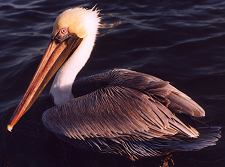
The Brown Pelican (Pelecanus occidentalis) is the smallest of the eight species of pelican. It is 106 to 137 cm (42 to 54 in) in length, weighs from 2.75 to 5.5 kg (6 to 12 lb) and has a wingspan from 1.83 to 2.5 m (6 to 8.2 ft). It occurs on coasts in the Americas from Washington and Virginia south to northern Chile and the mouth of the Amazon River. After nesting, North American birds move in flocks further north along the coasts, returning to warmer waters for winter. Their young are hatched in broods of about 3, and eat around 150 lbs. of fish in the 8-10 month period they are cared for. This bird is distinguished from the American White Pelican by its brown body and its habit of diving for fish from the air. It eats mainly fish and amphibians as well as crustaceans. Groups of Brown Pelicans often travel in single file, flying low over the water’s surface. The nest location varies from a simple scrape on the ground on an island to a bulky stick nest in a low tree. These birds nest in colonies, usually on islands. It is a myth that Brown Pelicans go blind from diving into the water to catch fish, causing them to starve to death because they can no longer see to hunt. Pelicans can live and fish for up to thirty years without going blind. Pelicans can go blind from pollution, abuse and disease, including chemical spills near the coast, fishing line, and avian botulism from tainted fish caught in overly warm water. Pesticides like DDT and dieldrin threatened the Brown Pelican’s future in the southeast United States and California in the early 1970s. Pesticides also threatened the pelican population in Florida in this period. Dr. Ralph Schreiber conducted research in the Tampa Bay/St Petersburg area and found that DDT caused the pelican eggshells to be overly-thin and incapable of supporting the embryo to maturity. As a result of this research, DDT usage was eliminated in Florida and the rest of the country. The Brown Pelican was listed as endangered since 1970 when its numbers dipped to 10,000. The US government remedied the situation by imposing a ban on the use of DDT in 1972. Since then, the population of Brown Pelican had been climbing and was recently removed from the list in November 2009.
THE NINE-BANDED ARMADILLO (DASYPUS NOVEMCINCTUS)
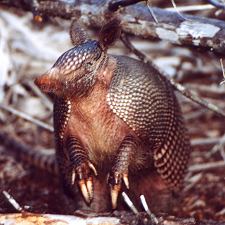
There are approximately 20 species of Armadillo. In the United States, the sole resident armadillo is the Nine-banded Armadillo. It is most common in the central southernmost states, particularly Texas. It is the one we find on Shell Island. Their range is as far east as South Carolina and Florida and as far north as Nebraska; they have been consistently expanding their range over the last century due to a lack of natural predators and have been found as far north as Illinois, Indiana and southern Ontario. The word armadillo is Spanish for “little armored one”. Armadillos are prolific diggers. Many species use their sharp claws to dig for food, and to dig dens. The diet of different armadillo species varies, but consists mainly of insects, grubs, and other invertebrates. Armadillos have poor vision. The armor is formed by plates of dermal bone covered in relatively small, overlapping epidermal scales. This armor-like skin appears to be the main defense of many armadillos, although most escape predators by fleeing (often into thorny patches, from which their armor protects them) or digging to safety. Only the The North American Nine-banded Armadillo tends to jump straight in the air when surprised, and consequently often collides with the undercarriage or fenders of passing vehicles. Armadillos have short legs but can move quite quickly, and have the ability to remain underwater for as long as six minutes. Because of the density of its armor, an armadillo will sink in water unless it inflates its stomach and intestines with air, which often doubles its size and allows it to swim across narrow bodies of water. Gestation lasts anywhere from 60 to 120 days, depending on species, although the nine-banded armadillo also exhibits delayed implantation, so that the young are not typically born for eight months after mating. Most members of the genus Dasypus give birth to four monozygotic young (that is, identical quadruplets), but other species may have typical litter sizes that range from one to eight. The Nine-banded Armadillo also serves science through its unusual reproductive system, in which four genetically identical quadruplets are born in each litter
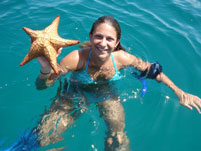
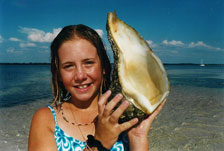
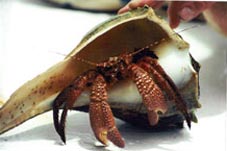
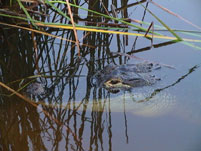
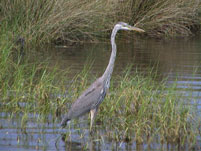
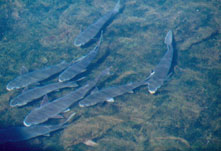
All the photographs on this page have been taken by Water Planet staff and are copyrighted.

